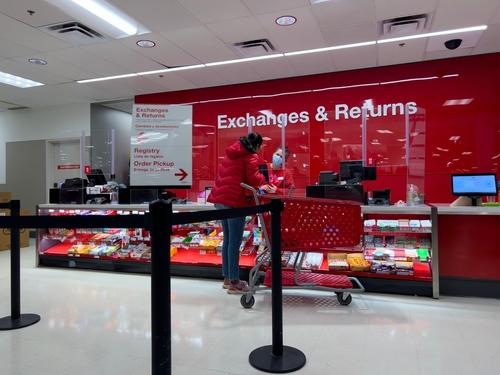Holiday Retail Forecasts and Predictions 2023
For retailers, the months leading up to peak selling season are a whirlwind of planning and strategizing, as they strive to capture the hearts — and wallets — of shoppers. For shoppers, the holidays transform storefronts into portals of inspiration and shopping bags into treasure chests of childlike excitement.
However, in a world marked by constant change and shifting consumer preferences, accurately predicting holiday retail trends has become harder and harder. Last year, retail sales during 2022’s November-December holiday season grew 5.3% over 2021 to $936.3 billion, falling short of the National Retail Federation’s forecast amid continuing inflation and high interest rates.
Holiday forecasts and predictions may be a bit like peering into a crystal ball — or hazy snow globe — but to help retailers make sense of it all, RIS again curates a selection of recent retail surveys and research to provide the top data needed to prepare and strategize.
Below, RIS offers our fourth annual guide to the peak selling season.
[Compare to last year’s predictions here: 2022 Holiday Retail Forecasts and Predictions]
2023 Holiday Spending
How will shoppers spend in the current climate? To answer the question on every retailer’s mind, we look at several forecasts.
Holiday retail sales are likely to increase between 3.5% and 4.6% in 2023 for the November-January timeframe, according to Deloitte’s annual holiday retail forecast. Last year the company predicted an increase between 4% and 6%, for comparison. Deloitte also forecasts e-commerce sales will grow between 10.3% to 12.8% year-over-year during the 2023-2024 holiday season. This will likely result in e-commerce holiday sales reaching between $278 billion and $284 billion this season.
“We expect healthy employment and income growth to keep the volume of sales growing for the 2023 holiday season,” said Daniel Bachman, Deloitte’s U.S. economic forecaster. “Inflation, which accounted for much of the increase in the value of retail sales last year, should moderate. This means the total value of retail sales will grow more slowly than last year. Our forecast also reflects a decreasing pool of pandemic-era savings, both of which will weigh on retail sales and are reflected in our lower projected growth for the season.”
Salesforce forecasts 4% global and 1% U.S. year-over-year online sales growth across November and December – reaching $1.19 trillion and $273 billion respectively. Sixty percent of these sales – or $714 billion globally – will be influenced by frontline workers in the store by a combination of creating demand and fulfilling online orders at retail locations.
Bain & Company forecasts nominal U.S. retail sales to slow this holiday season, with the lowest growth rate since 2018. Unadjusted seasonal sales are expected to grow 3% year-over-year in November and December, reaching nearly $915 billion, with 90% of the growth coming from non-store (e-commerce and mail-order) sales. However, adjusting for inflation, real U.S. holiday retail sales growth will be sluggish at just 1.0%, the company said, well below the 10-year average and the lowest real sales growth since the financial crisis.
If we look at August U.S. retail sales for clues to the upcoming months, retail sales rose 0.6%, compared with a revised 0.5% increase in July, according to a report issued by the Commerce Department.
“August was another month of modest growth for retail which saw total sales expand by 2.9%,” commented Neil Saunders, managing director of GlobalData. “In the general scheme of things, this isn’t a bad uplift, but it underlines the fact that the sector is on a much shallower trajectory than it has been for the past few years. Once inflation is taken into account, overall retail volumes declined by around 0.3%. Notably, last month’s numbers were revised downward which pushed the 2.5% growth reported at the time to a shallower 2.0%. This isn’t a huge difference, but it again speaks to various pressures which are preventing retail from expanding at a faster pace.”
“August was aided by some solid spending on back-to-school products as well as a small uptick in the number of people buying apparel for vacations and in preparation for the fall,” Saunders also noted. “Much spending was purposeful and was focused on products that were needed rather than those being bought on impulse. A pattern seems to be emerging where consumers are cutting back on general browsing and impulse buying, but are happier to spend a bit more for certain events. The hope for retailers is that other occasions in the back half of the year, including Halloween and the holidays, will stimulate consumers into buying.”
Celigo, which conducted an independent survey in July 2023 with 1,000 U.S. consumers nationwide, found this holiday season, an overwhelming majority of U.S. consumers are setting budget limitations on their holiday spending. Nearly 80% of survey respondents indicated they are determined to spend less than $5,000 on holiday shopping. Approximately half (49%) of the respondents said they plan to spend less than $1,000 on holiday shopping, while 30% revealed they have budgeted between $2,000 and $5,000 for gifts this year. “While a significant portion of shoppers are committed to strict financial prudence and responsible budget management, there remains a subset willing to spend moderately on meaningful gifts and experiences.”
“We’re seeing a stark shift from a period of strong consumption, which maintained healthy retail demand, to a sharp downward trend with ballooning credit card debt, high-interest rates, and inflation,” Sivakumar Lakshmanan, head of software solutions, Zebra Technologies (former CEO of antuit.ai, now part of Zebra), tells RIS. “The consumption trend is starting to shift downward with ballooning credit card debt, high-interest rates, and inflation. As we enter the holiday season, this would be an area for retailers to watch out for, particularly discretionary spending categories, making the ability to predict and respond to demand even more critical.
“Secondly, frontline and warehouse labor availability remains a concern. The labor market constraint is here to stay, making retailers look for automation and digital transformation initiatives to make the frontline more efficient and effective. Lastly, retail returns and shrinkage are at an all-time high, making inventory visibility technologies a must have to tackle margin erosion.”
According to 84.51°’s holiday whitepaper, “From tradition to transformation: Examining holiday shopping trends and evolving customer habits,” 45% of shoppers believe inflation will very much impact their discretionary spending. The report advised that in-store digital screens, mobile apps, and smart order fulfillment are key ways for brands and retailers to collaborate on making the holiday shopping experience easy and engaging for shoppers. To connect with price-sensitive shoppers, it advised to “offer attractive discounts, promotions, or value packs that resonate with price-sensitive shoppers. Bundle essential holiday items, create ‘Buy One, Get One’ offers, or provide special savings on bulk purchases.”
- Consumers Holiday Shopping Earlier
Shoppers are eager to get an earlier start to their holiday shopping than in 2022. A significant 38% of the population is planning to start holiday shopping in September, a 25% increase from last year. Shoppers who turn to creators for shopping inspiration also plan to shop earlier this year, with 45% planning to start in September.
Source: LTK Holiday Shopper StudyThis year, 67% of consumers plan to begin their holiday shopping ahead of Black Friday and Cyber Monday. This trend reflects an inclination towards staggered shopping and a concerted search for comprehensive value amid inflation. When it comes to what consumers want most this season, it's a deal. Promotional sales and discounts (64%) are highlighted as a top factor driving purchasing decisions, demonstrating the significance of affordability during this period.
Source: Radial 2023 Peak Consumer SurveyYour brand needs to be holiday-ready now: 11% already holiday shopped in July and 14% in August, while 19% will in September, 35% in October, 57% in November, and 48% in December.
Source: Bazaarvoice’s Holiday Consumer SurveyNearly 50% of respondents said they will begin shopping no later than October and 26% of consumers are bypassing Black Friday entirely. More than half of Gen X and 50% of millennial shoppers are shopping earlier for holiday deals in September and October. Despite the long-standing tradition of door-busting holiday sales, Black Friday and Cyber Monday are least important to baby boomers. Less than 14% of shoppers across all demographics are waiting until the last minute to start holiday shopping – most likely scorned by supply chain issues of years past.
Source: Celigo’s 2023 Holiday Shopping Trends Report
Supply Chain and Inventory Concerns for Peak Season
Economic uncertainties, such as fluctuations in exchange rates, trade tensions, and supply chain disruptions, have compelled retailers to carefully assess their inventory needs and exercise caution in their procurement decisions, according to Anvyl research. Some key takeaways include 65% of retailer respondents expect inventory to arrive in warehouses 2-4 weeks before Black Friday, while 63% of retailers are actively exploring new suppliers or sourcing regions to reduce the impact of potential disruptions.
Kenco reports, although supply chain kinks have significantly improved over the last three years and 52% of respondents of its 2023 E-commerce Peak Season Pulse survey show no supply chain concerns, 60% of consumers still worry about product availability for this year. In fact, 42% of consumers have already started their peak season shopping to get ahead of these concerns.
“With many retailers struggling with inventory surpluses, there is an opportunity here to target these early shoppers,” said Dave Hauptman, chief commercial officer at Kenco. “Retailers can pull out and promote their inventory overstock earlier, reducing the amount of products in their warehouses and stores and also potentially reducing order spikes on more traditional shopping holidays.”
[Interested in supply chain? Sign up to attend Value Chain Tech in 2024]
Jason Minghini, SVP of operations at Kenco, advised retailers should consider marketing additional sales and creating more shopping holidays to not only spread-out consumer spending, but also flatten the curve of peak season logistics and its respective labor challenges. “By incentivizing consumers to shop on additional days, retailers can also avoid potential shipping delays caused by high order volumes.”
Another way that retailers can spread out product shipping and offer a money-saving service to consumers is to incentivize slower delivery. Most consumers (72%) would opt for slower shipping if it meant their packages arrived for free. Nearly three-quarters (74%) will take slower shipping speeds if provided an incentive such as saving on an order (72%), a gift card or store credit (64%) or a free upgrade to faster shipping on a future purchase (25%).
“The delicate dance of predicting material, manufacturing, shipping and delivery timelines as well as consumer demand is challenging at the best of times,” Matthew Guiste, global retail strategist, Zebra Technologies, tells RIS. “The last four years have led to a significant spike in on-hand inventory, resulting in a substantial increase in total retail inventory in the United States. In June 2023, retail inventory (excluding auto) reached its peak at $560 million, marking a remarkable 35% surge from pre-pandemic levels. Additionally, many shoppers are looking to check their lists twice and complete their holiday shopping as early as October. Retailers are expected to offer bold discounts, especially early in the season as they look to secure early wins and build comfort in their holiday results.”
Artificial Intelligence and Personalization
Personalization and artificial intelligence (AI) have been big buzzwords this year, so naturally it will be interesting to observe how these themes play into peak season 2023.
“Consumers can expect more AI-driven shopping experiences this holiday season due to the proliferation of generative AI,” comments Sven Denecken, chief marketing and solutions officer, SAP Industries & CX.
According to Salesforce, 17% of shoppers report they’ve already used generative AI for purchase inspiration. The company predicts the technology will influence $194 billion in global online holiday shopping spend as retailers use predictive and generative AI for operational efficiencies and personalized shopping experiences.
“A recent survey from SAP Emarsys revealed that U.S. consumers crave the benefits AI-driven personalization brings," said Denecken. "In fact, more than half (59%) of U.S. consumers want a retail experience that’s unique to them and are more likely to purchase from brands that offer personalized extras and recommendations.
“AI, as well as data, provides retailers with the agility to cater to shoppers’ needs and turn every interaction into an opportunity to win over customers through personalized offers and discounts. These technologies can also be leveraged to monitor changing shopping behaviors and identify and convert on growth opportunities by quickly adding new customer touchpoints.
“For the last-mile, retailers can make the shopping experience as frictionless as possible by connecting the enterprise with end-to-end experiences. This ensures that inventory levels meet demand and fulfillment is not backlogged, ultimately avoiding customer frustration or the dreaded post-holiday returns that eat into the growth retailers work so hard for.”
“Retailers can no longer deploy a generic, one-size-fits-all approach to holiday shopping,” said Mark Simon, VP of strategy at Celigo. “Instead, they must make more personalized, value-driven offers that target specific consumers as well as guarantee immediate delivery, in-stock merchandise, and reasonable returns policies (69% of shoppers expect retailers to provide more personalized offers in addition to good deals and cost savings this year). To do this successfully, they must automate key business processes and employ more granular customer segmentation.”
Holiday Returns
Returns will impact not only the post-holiday days, but policies can impact sales today.
Blue Yonder’s 2023 Returns Survey, which polled 1,000 U.S. consumers, found 59% said tighter return restrictions have deterred them from making a purchase, while 71% lenient return policies significantly or moderately influenced their decision to purchase.
Salesforce found 88% of retailers say they will make their return policies stricter ahead of the holidays, which presents a risk. Retailers who rein in their return policies could see a slower start to the holidays, Salesforce said. Based on previous years’ data, it predicts that retailers with return windows of 30 days or less will see 7% fewer online sales in October and November.
For retailers, there are alternative return policies that can alleviate shopper pain points. Radial’s survey found 41% of respondents seek an extended return window during the holidays, while 32% want the option to buy online and return in-store. Extending return windows and offering options like "buy online, return in-store" are actionable strategies that add flexibility and convenience to the consumer experience.
“Retailers like Saks and Farm Rio are shaking up ‘traditional’ returns policies and pioneering a concept called 'incentivized returns,'” goTRG CEO Sender Shamiss tells RIS. “Under this model, customers can enjoy free returns if they act within a specified timeframe, but face charges if they exceed that window. This clever strategy not only expedites the return process but also provides retailers with a crucial advantage — extra time to resell the item before it requires markdowns, a particularly vital consideration for seasonal merchandise.
“As the holiday season perennially triggers a surge in returns, AI is emerging as a game-changer for retailers aiming to safeguard profit margins and optimize inventory. Features like 'exchange recommendations' are becoming a staple in the post-purchase experience. By leveraging advanced returns software, retailers can pivot from traditional returns to offering product exchanges, a strategic move that could mitigate the annual billion-dollar losses incurred from holiday returns.”
"The current returns process has too many touchpoints where shrinkage can happen,” Christian Piller, co-founder and chief commercial officer of Pollen Returns tells RIS. “The current returns process where items are inside a sealed box means bad acting consumers can return a brick instead of a remote control, for example. Retailers may not notice they did not receive their remote control for several weeks and too many touches have happened by that time to truly understand who did what when. This causes up to 2% inventory loss annually. The future of returns is box-less and label-less returns pickups from consumers doorsteps where pictures are taken of the item itself to start the product verification process.”







